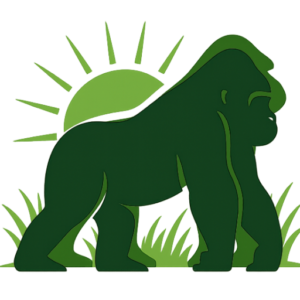Best Time to Go for Gorilla Trekking in Uganda – Plan the Perfect Safari Experience
Introduction to Uganda’s Gorilla Seasons
Uganda’s misty rainforests are among the most magical places on Earth — ancient jungles where mountain gorillas live freely in family groups and the air hums with the rhythm of nature. For many travelers, meeting these gentle giants in the wild is a once-in-a-lifetime dream. Yet, to make the most of this extraordinary experience, timing is everything.
The best time to go for gorilla trekking in Uganda depends on several factors — including weather, trail conditions, photography opportunities, and crowd levels. Uganda’s tropical climate makes gorilla trekking possible year-round, but certain months offer clearer trails, easier hikes, and more comfortable conditions. Understanding the seasonal variations can help you plan your adventure perfectly.
Uganda’s Gorilla Trekking Destinations
Before looking at timing, it’s important to know where gorilla trekking happens in Uganda. The two main destinations are Bwindi Impenetrable National Park and Mgahinga Gorilla National Park, both located in the southwestern highlands. Bwindi, a UNESCO World Heritage Site, is the more popular of the two, home to over half of the world’s remaining mountain gorillas and multiple habituated families across its four sectors — Buhoma, Ruhija, Rushaga, and Nkuringo. Mgahinga, though smaller, offers equally rewarding encounters, often with fewer visitors and beautiful volcanic scenery.
The Dry Seasons – Peak Time for Gorilla Trekking
The dry seasons — from June to September and December to February — are considered the best times for gorilla trekking in Uganda. During these months, rainfall is minimal, trails are less muddy, and visibility is excellent for photography and forest exploration.
June to September – The Main Dry Season
This is the most popular period for gorilla trekking. The weather is generally dry and cool, making it comfortable for hiking through the dense forest. Vegetation is slightly thinner, which improves chances of clear sightings and better photographs. It’s also the high safari season across East Africa, meaning you can combine your gorilla trek with wildlife viewing in Queen Elizabeth, Murchison Falls, or Kidepo Valley National Park.
However, because this is the peak tourism period, permits and accommodation tend to sell out months in advance. Booking at least six months early is highly recommended.
December to February – The Short Dry Season
This period marks another excellent window for trekking. While slightly warmer, it offers similar advantages — manageable trails, less rain, and lush green scenery. It’s also a wonderful time for birdwatching, as migratory species arrive from Europe and North Africa. Travelers visiting in December often enjoy festive celebrations in lodges, adding cultural warmth to the adventure.
The Wet Seasons – Lush, Quiet, and Rewarding
Uganda’s wet seasons, from March to May and October to November, bring heavier rainfall but also unique advantages for certain travelers. The forests are at their most vibrant, draped in shades of emerald, and the gorillas often stay closer to the lower slopes since food is abundant.
March to May – The Long Wet Season
This is the period of heaviest rainfall. Trails can be slippery and more physically demanding, especially in Bwindi’s steep terrain. However, it’s the best time for solitude — fewer visitors mean quieter treks and more intimate encounters with the gorillas. Lodges and tour operators often offer discounted rates, making it ideal for budget-conscious travelers.
October to November – The Short Wet Season
These months bring light to moderate rainfall, often in the afternoons, leaving mornings clear and fresh. The scenery is spectacular, with mist-shrouded mountains and dramatic light for photographers. This period also offers good chances of availability for last-minute travelers, as it falls just before the December rush.
Temperature and Weather Overview
Uganda’s equatorial location ensures a stable, pleasant climate year-round. Temperatures in gorilla regions like Bwindi and Mgahinga range between 10°C and 25°C (50°F to 77°F), depending on altitude and time of day. Early mornings and evenings can be cool, so packing layers is essential. Even in dry seasons, light rain is possible — after all, these are rainforests. A waterproof jacket and sturdy trekking boots remain must-haves at any time of year.
Best Time for Photography and Scenery
For photographers, the dry months provide the best lighting and stability for equipment. The forests are clearer, and you’ll have fewer obstacles blocking your lens. However, the wet seasons offer incredible color saturation — deep greens, soft mist, and dramatic skies that make for truly atmospheric shots. Many professional photographers actually prefer this season for the mood and tone it gives to their images.
Gorilla Trekking Permits and Booking Tips
Gorilla trekking permits in Uganda cost $800 per person and are issued by the Uganda Wildlife Authority (UWA). Only a limited number are available each day, so booking early — especially during peak months — is crucial. Travelers can book directly through UWA or via licensed tour operators who handle logistics, transport, and accommodation.
During low seasons, discounted packages are often available, combining gorilla trekking with visits to other parks. It’s also wise to plan at least one buffer day in case of unexpected weather delays or long treks.
Combining Gorilla Trekking with Other Activities
No matter the season, Uganda offers incredible opportunities to extend your safari. After trekking, many travelers enjoy a boat cruise on the Kazinga Channel, chimpanzee tracking in Kibale Forest, or wildlife drives in Queen Elizabeth National Park. The country’s variety of ecosystems ensures that every trip feels rich and balanced — from forest to savannah, mountain to lake.
Final Thoughts
The best time to go for gorilla trekking in Uganda ultimately depends on your preferences. If you want the most comfortable hiking conditions and the clearest views, choose the dry seasons between June–September and December–February. If you prefer fewer tourists, lush scenery, and possible discounts, the wet seasons offer a serene and equally rewarding alternative.
Whichever time you choose, Uganda’s gorilla trekking experience will leave you humbled and transformed. The thrill of standing a few meters from a mountain gorilla — listening to its breathing, watching it nurture its young, feeling its calm authority — transcends weather and season. It is a moment that belongs to all time.





